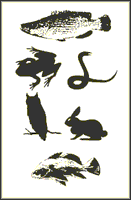Nebraska Cooperative Fish and Wildlife Research Unit

Nebraska Cooperative Fish and Wildlife Research Unit: Staff Publications
Date of this Version
2015
Citation
Martin, D. R., C. J. Chizinski, and K. L. Pope. 2015. Reservoir area of influence and implications for fisheries management. North American Journal of Fisheries Management 35:185-190.
Abstract
Understanding the spatial area that a reservoir draws anglers from, defined as the reservoir’s area of influence, and the potential overlap of that area of influence between reservoirs is important for fishery managers. Our objective was to define the area of influence for reservoirs of the Salt Valley regional fishery in southeastern Nebraska using kernel density estimation. We used angler survey data obtained from in-person interviews at 17 reservoirs during 2009–2012. The area of influence, defined by the 95% kernel density, for reservoirs within the Salt Valley regional fishery varied, indicating that anglers use reservoirs differently across the regional fishery. Areas of influence reveal angler preferences in a regional context, indicating preferred reservoirs with a greater area of influence. Further, differences in areas of influences across time and among reservoirs can be used as an assessment following management changes on an individual reservoir or within a regional fishery. Kernel density estimation provided a clear method for creating spatial maps of areas of influence and provided a two-dimensional view of angler travel, as opposed to the traditional mean travel distance assessment.
Included in
Aquaculture and Fisheries Commons, Environmental Indicators and Impact Assessment Commons, Environmental Monitoring Commons, Natural Resource Economics Commons, Natural Resources and Conservation Commons, Water Resource Management Commons


Comments
This article is a U.S. government work, and is not subject to copyright in the United States.